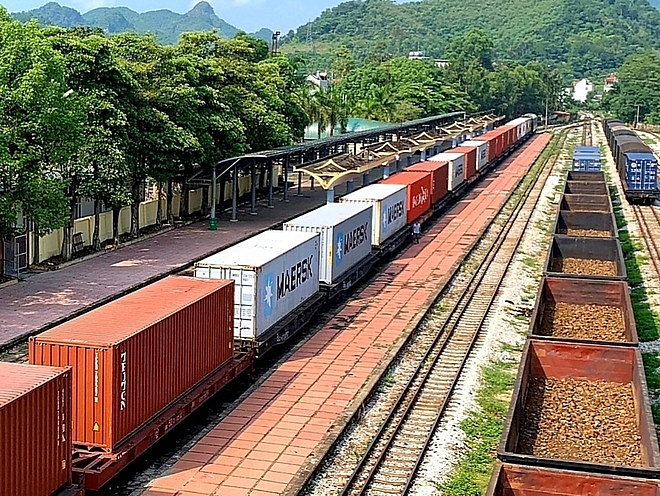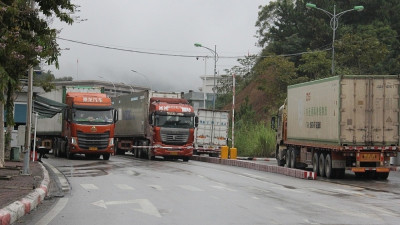When a business changes the mode or means of transit cargo transport from the entry customs checkpoint to the exit checkpoint, the customs declarant must submit an official request to the relevant customs authority according to Decree 167/2023/ND-CP.

Context: Changing the Mode of Transit Cargo Transportation
In import-export operations, transit cargo transportation is a crucial step to ensure goods move from the exporting country to the exit checkpoint without paying unnecessary taxes or undergoing complex procedures in intermediary countries.
However, during transit, it is sometimes necessary to change the transportation mode or vehicle, often to optimize cost, time, or in response to transport incidents. In such cases, customs declarants must clearly understand the regulations to comply with procedures and avoid legal violations.
Legal Regulations
According to Article 44 of Decree 167/2023/ND-CP, when changing the mode of transportation, the customs declarant must:
- Prepare and submit an official request to the customs authority:
The request should be submitted to the customs office at the entry or exit checkpoint, depending on the case. The document must clearly state the reason for the change and include detailed information about the goods and the new transport means. - Update information on the customs declaration:
Any changes in vehicles, routes, or transportation modes must be updated on the submitted declaration to allow customs authorities to track and approve the modifications. - Comply with inspection and supervision requirements:
Even with a change in transportation mode, goods must comply with customs inspection, supervision, and safety regulations at checkpoints. Non-compliance may result in administrative fines or delays in clearance.
Step-by-Step Procedure
Customs declarants should follow these steps to comply with regulations:
- Step 1: Verify information on the old and new transport modes and vehicles.
- Step 2: Draft an official request for changing the transportation mode, including detailed reasons.
- Step 3: Submit the request to the customs authority at the entry or exit checkpoint.
- Step 4: Update the customs declaration with the new information.
- Step 5: Await confirmation from customs before proceeding with transportation.
Note: All accompanying documents must be complete and valid to avoid rejection or clearance delays.
Key Notes for Businesses
- Plan changes in advance: Any transportation mode change should be anticipated to prepare documents and procedures on time.
- Check transport contracts: Ensure changes do not violate agreements with carriers or logistics partners.
- Monitor progress: Customs authorities require time to review requests, so careful tracking is essential to prevent disruptions in the transit process.
Conclusion
Changing the mode of transit cargo transportation is common in modern logistics, but it must comply with all customs regulations to avoid legal risks and supply chain disruptions.
Customs declarants play a critical role in ensuring proper procedures are followed, enabling goods to move smoothly and legally through transit checkpoints.
Source: Vietnam Logistics
Need solutions for import-export, international transport, customs, and logistics? VNFT Logistics delivers fast, accurate, and cost-efficient services, ensuring your goods arrive on time – at the right place – as promised.
🚢 Ocean Freight | ✈️ Air Freight | 📑 Customs Brokerage | 🚚 Domestic Transport | 🏢 Warehousing | 🌎 Global Solutions
📞 Hotline: +84 938 690 680
📧 Email: bod@vnftgroup.com
📍 Address: 3rd Floor, DMA Building, 45 Dinh Tien Hoang, Saigon Ward, Ho Chi Minh City, Vietnam
✨ VNFT Logistics – Not just transportation, but creating value for Vietnamese brands on the global stage. ✨
#VNFTLogistics #importexport #customs #logistics #globalfreight #VietnamBrand




